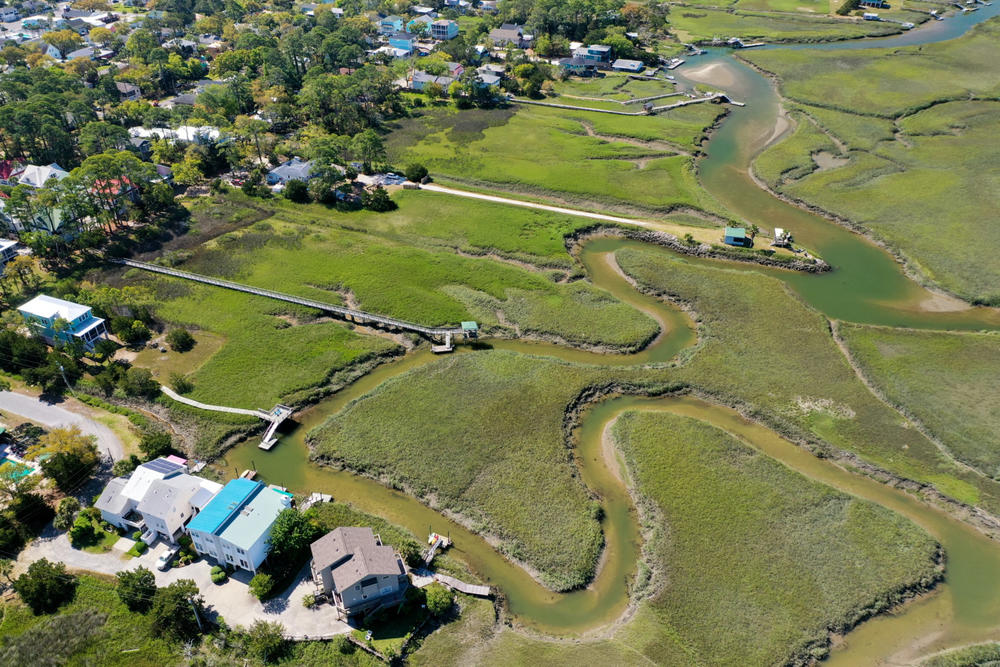
Caption
Marshland as seen from the air on Tybee Island. A new planned levee will cover 1,200 feet of marsh, replacing a culvert that is impeding water flow and causing erosion across the marsh, according to Sen. Jon Ossoff's office.
Credit: Resilient Tybee

